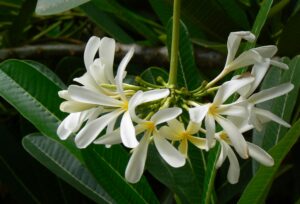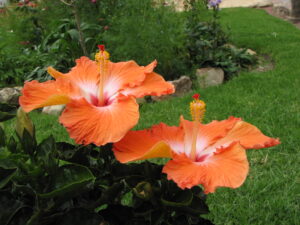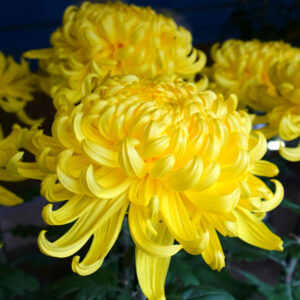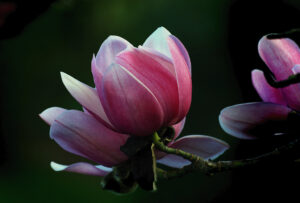National flowers came to prominence in Asia as part of decolonisation, with a spate of newly independent countries looking for symbols to represent their new nationhood.
Contributor: Jenny Chin
Together with national anthems that had to be commissioned, flower emblems had to be found, sometimes by popular vote. That was the case with the lotus flower in Vietnam, featured in previous FNGN edition. In abundance everywhere, the Lotus represents devotion, purity and resilience, and a ubiquitous motif in Vietnamese art, it was an unavoidable choice.
INDONESIA: Similarly in Indonesia, jasmine (melati putih) has been part of Javanese cultural traditions for centuries, symbolizing purity, sacredness, sincerity.

Frequently used in wedding garlands, it has also been linked to life, death and fallen heroes in poetry and songs. But Indonesia cast its net wide due to the biodiversity of its thousands of islands and perhaps, because jasmine is also the national flower of the Philippines. Indonesia has two other floral emblems – the moon orchid (anggrek bulan) as the flower of charm and the oversized, smelly rafflesia arnoldii, otherwise known as corpse flower, as its rare flower.
MALAYSIA: In Malaysia, the first Prime Minister chose the red hibiscus cultivar (hibiscus rosa-sinesis) as its national emblem to signify courage, vitality and a celebration of unity of its multicultural population.

South Korea also has the hibiscus (mugunghwa) as its national flower, but the latter is a beloved temperate species, hibiscus syriacus, native to the Korean peninsula. Even before it was adopted as the national flower, Korea has been known as the land of mugunghwa. For the South Koreans it symbolises a noble spirit and the trials and tribulations of its nationhood.
CHINA: In the world’s oldest, continuous monarchy, the popular chrysanthemum is symbolic of imperial authority and the institution it represents. It is engraved on the emperor ‘s throne and on Japanese passport covers. Although from China, the flower became entwined with the imperial family in the 12th century when it was personally adopted by the Emperor Go-Toba.

Surprisingly, China is yet to select a national flower despite lobbying by its horticulturalists. Perhaps there are too many worthy candidates, but the paeony would be a popular choice based on social media posts.
Named after the city’s official flower, the magnolia, Shanghai China Magnolia Awards are presented by the Shanghai Television Festival to honor outstanding achievements in television and film. These awards recognize excellence in various categories such as TV series, documentaries, animation, and more. Additionally, the Shanghai Magnolia Award is given to expatriates who have made significant contributions to the city of Magnolia Silver Award, Magnolia Gold Award and Honorary Citizen.

AUSTRALIA : Although the golden wattle has featured in the Australian Commonwealth coat of arms just after Federation, it was only formally adopted as the national flower in 1988. The wattle not only showcases the national sporting colours of green and gold, it also symbolises adaptability and resilience as wattle thrives in the harsh Australian landscape.

AUSTRALIA’s 1ST NATION’S SYMBOLIC DESERT FLOWER

The Sturt Desert Pea (Swainsona formosa), Aboriginal name is Ngooringa, has multiple symbolic meanings.
- A female spirit of the desert: Comes from a story about a girl who fell in love with someone from another tribe and died. Her spirit returned as the desert flower.
- A symbol of love: In some First Nations stories, the desert pea represents both love and loss, similar to the Anzac Flanders poppy.
- A symbol of mourning: “The Flower of Blood” by Aboriginal people and is associated with grief, sadness, and loss. Some say it represents the blood shed during the invasion of their land and the years of European settlement.
- A symbol of bravery and strength: The flower can also represent the ability to thrive in harsh conditions.
- The state emblem of South Australia: The flower is featured on the state’s Coat of Arms, which was proclaimed in 1984.





















